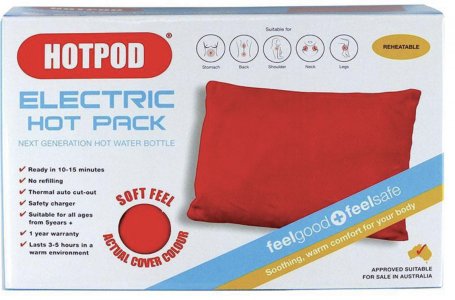Cost-effective ways to heat your home, according to CHOICE experts
- Replies 37
The winter season is here, and as the outside temperatures begin to fall and the air inside our homes becomes chillier, our first instinct is to reach for the thermostat.
But given the ongoing reports of higher electricity & gas prices and the increasing cost of groceries, it may be sensible to give some thought to the ways in which you can maintain a comfortable temperature in your home while spending less money.
Making a few simple changes and experimenting with a few genius home hacks could help you save a lot of money on your energy bills this winter.
Fortunately for us, the energy experts at Australia's leading consumer advocacy group CHOICE have compiled a list of the cheapest ways to stay warm and comfortable this cool season.
CHOICE experts list the cheapest ways to stay warm this winter. Credit: Shutterstock/fizkes.
Air conditioning
The most environmentally friendly and cost-effective choice, as deemed by industry professionals, is air conditioning with a reverse-cycle system.
However, the installation can be quite pricey. Because of the potentially high purchase and installation costs—which can range anywhere from $2,000 to $15,000—this option is best suited for homeowners rather than renters.
If renters are fortunate enough to live in a home with air conditioning, it is a suitable option to use all year.
An energy expert at CHOICE noted that the cost of operating a reverse-cycle air conditioner throughout the entire year is only going to be a little bit higher than the cost of operating an electric heater throughout the entire winter season.
Gas heating
Gas heating is the second-best option for keeping warm this winter due to its low operating costs. However, in order to use gas heating, you must already have gas connected or set up an LPG system for your heater.
"They can't be installed in bedrooms or confined spaces like bathrooms, and some require a flue to vent outside your house," an expert explained, adding, "They're also not cheap to buy: you're looking at anywhere from $500 to $1400."
Electric heating
Renters may find that purchasing a portable electric heater is the most convenient option, though it is also the most expensive.
Although the initial costs are typically quite low, with prices beginning at just $30 at a number of different retailers, the ongoing expense is higher per hour in comparison to gas heating or air conditioning.
"Portable electric heaters are ideal for short-term use in small spaces. They're also a good choice for renters or strata apartment owners who may be unable to install air conditioning," advised the experts.
"Oil column heaters are the least expensive to run of all the different types of electric heaters, but only by a small margin. They take longer to warm up as well."
Here are some more tips from us here at the SDC:
Wear layers of clothing.
Wearing layers of clothing is a great way to stay warm without turning up the heat. Start with a base layer of long underwear followed by a layer of pants and a shirt. Then, add a sweater or sweatshirt, and finally a coat or jacket. You can also add a scarf, hat, and gloves for extra warmth.
Use a blanket.
A blanket can also help you stay warm without turning up the heat. Be sure to use a blanket that is big enough to cover you completely and keep it close by so you can easily grab it when you start to feel cold.
Consider an electric throw rug.
If you’re not familiar with these, imagine an electric blanket for your bed, but one that you ‘wear’ while sitting on the couch. These can be had for under $50 from retailers like Kmart & Target, and use only a fraction of the electricity that a heater would use.
Close off unused rooms.
If you have rooms in your home that you don’t use often, close the doors to those rooms to help keep the heat in the areas you do use. This will help you save money on your heating bill by only heating the rooms you actually use.
Use a programmable thermostat.
If you have a programmable thermostat, you can set it to lower the temperature when you’re not home or when you’re asleep. This will help you save money on your heating bill by only heating your home when you need it to be warm.
Stay safe and warm this winter, folks! Check out the video below for more ideas on how to heat your home and lower your electricity bill:
Credit: MrFixIt DIY.








